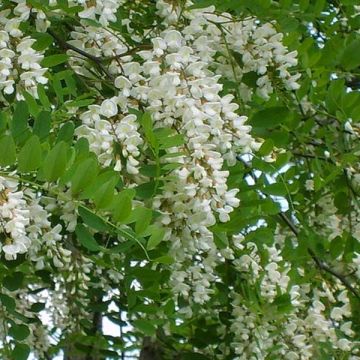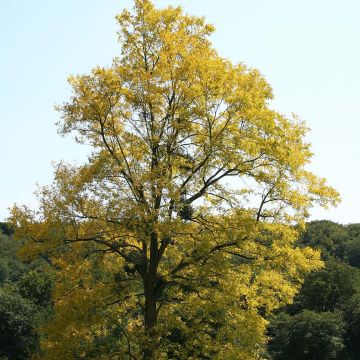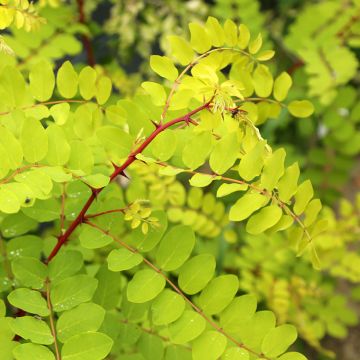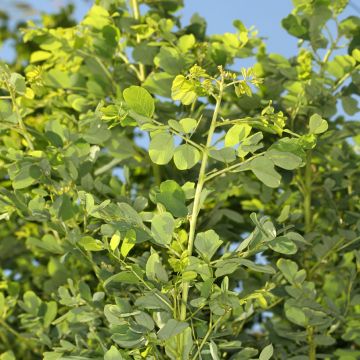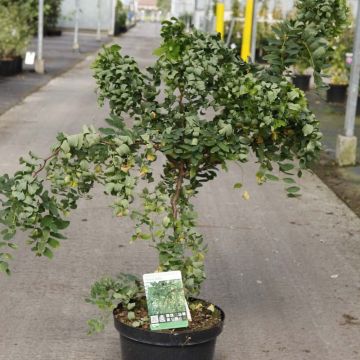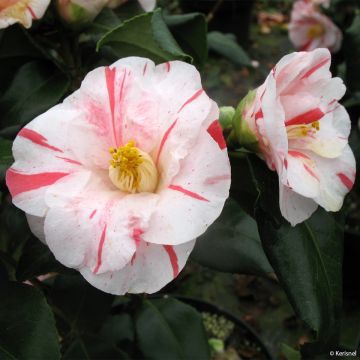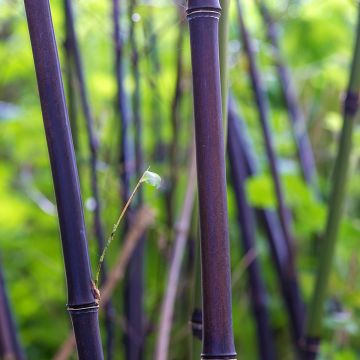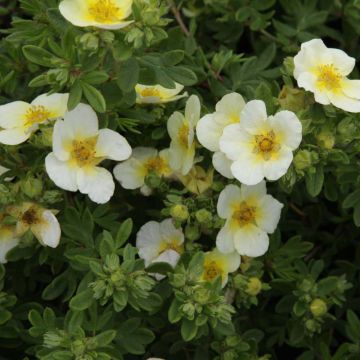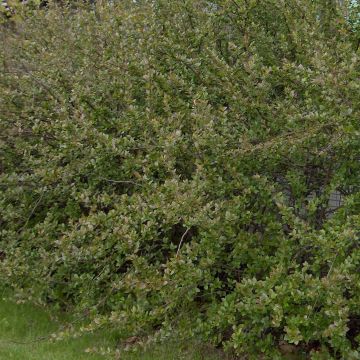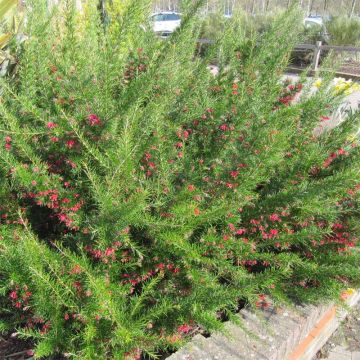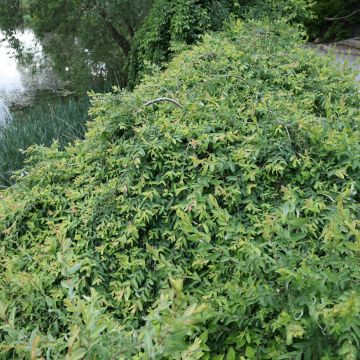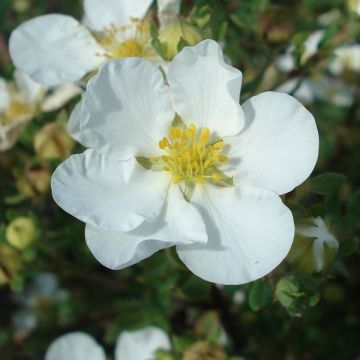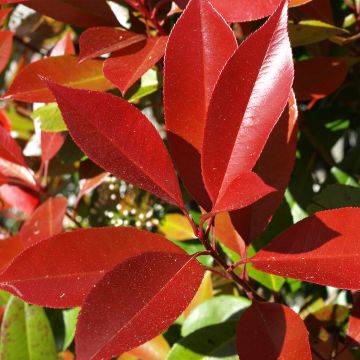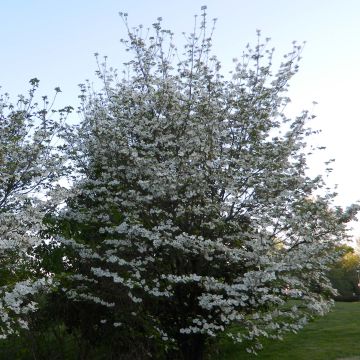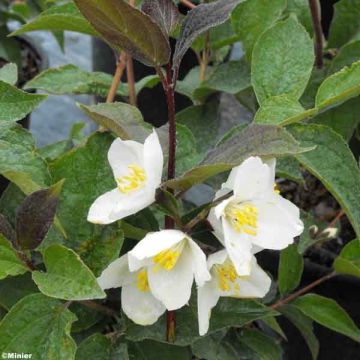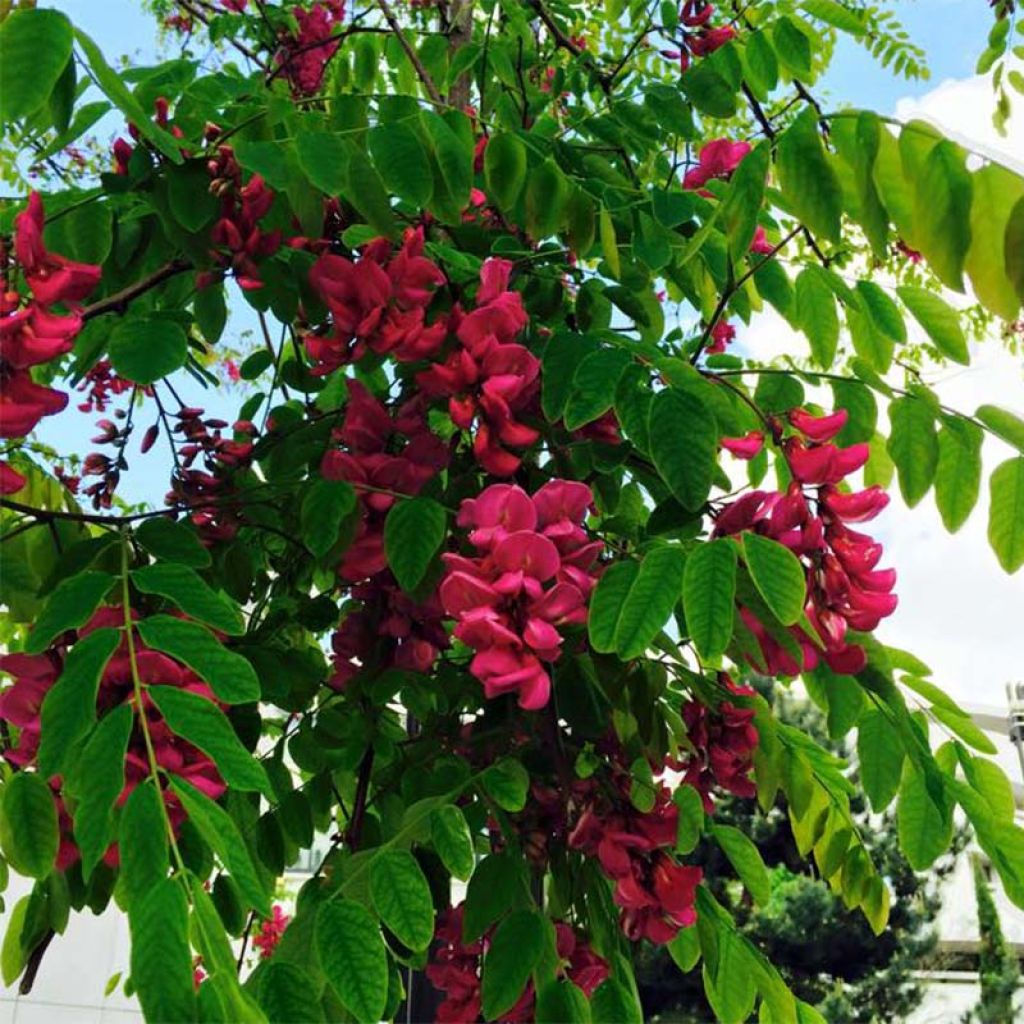

Robinia pseudoacacia Casque Rouge - Black Locust
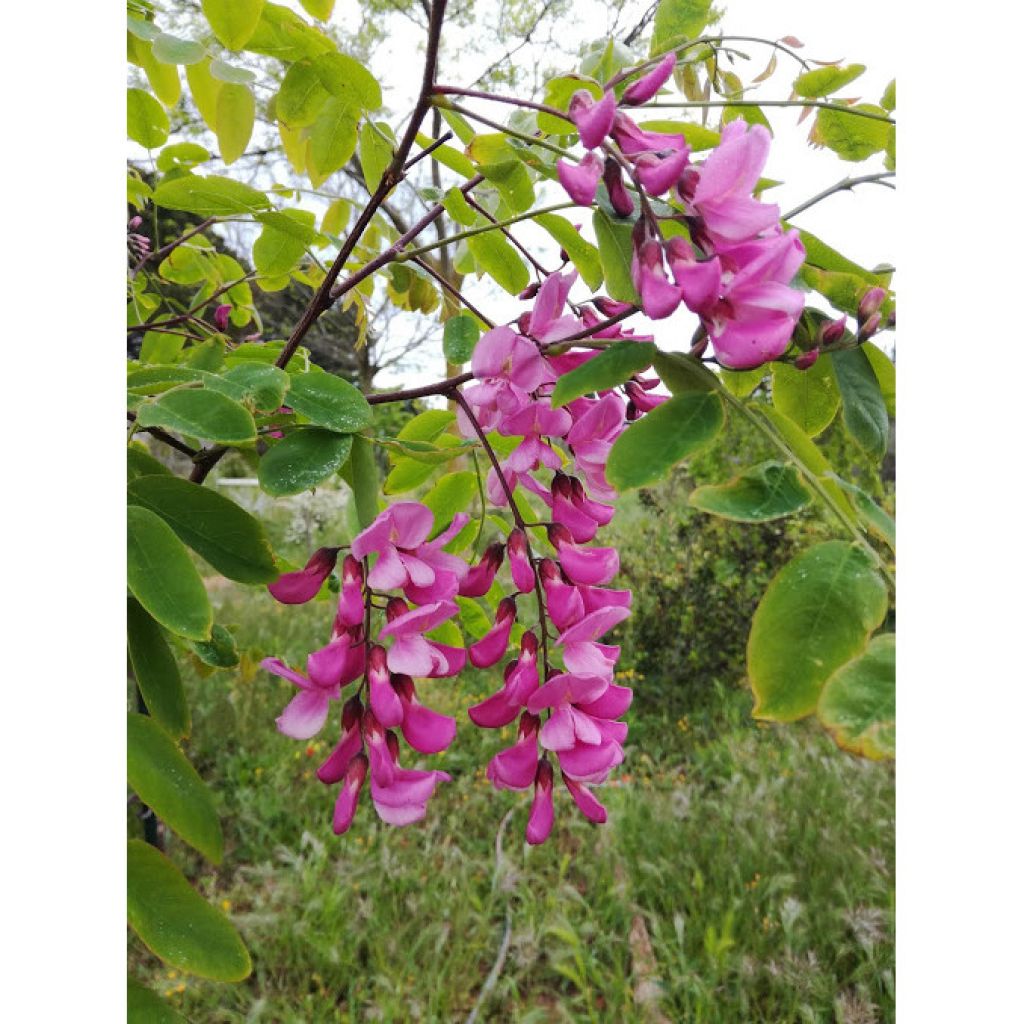

Robinia pseudoacacia Casque Rouge - Black Locust
Robinia pseudoacacia Casque Rouge - Black Locust
Robinia pseudoacacia Casque Rouge® 'Flemor'
False acacia, Black Locust, Locust Tree
Why not try an alternative variety in stock?
View all →This plant carries a 24 months recovery warranty
More information
We guarantee the quality of our plants for a full growing cycle, and will replace at our expense any plant that fails to recover under normal climatic and planting conditions.
Oversize package: home delivery by special carrier from €6.90 per order..
Express home delivery from €8.90.
Oversize package: home delivery by special carrier from €6.90 per order..
Express home delivery from €8.90.
Delivery to Corse prohibited: UE law prohibits the import of this plant from mainland France to Corse as part of the fight against Xylella fastidiosa. Please accept our sincere apologies.
More information
Does this plant fit my garden?
Set up your Plantfit profile →
Description
Robinia pseudoacacia (x margaretta) 'Casque Rouge' Flemor, also known as R. pseudoacacia 'Red Cascade' and R. x margaretta RED HELMET, is a beautiful deciduous tree of medium size, with an elegant airy growth habit and foliage that is both light and lush, turning golden yellow in autumn. This hybrid variety is appreciated for its brilliant late spring flowering, in the form of numerous slightly fragrant pendulous clusters, of a rich purple-pink. Delightful in spring, it will provide pleasant shade in summer and contribute to the autumnal splendour of the garden. This locust tree also owes its success to its ease of cultivation in any soil and in almost all climates.
This robinia is a horticultural hybrid obtained by cross-breeding Robinia pseudoacacia, native to the Eastern United States, and R. hispida, native to dry woodlands in the Southeastern United States. Belonging to the Fabaceae family, locust trees fix atmospheric nitrogen at their roots, allowing them to grow in poor soils. It is a long-lived tree with a columnar habit during the first years, and the sparse canopy becomes more rounded over time. With rapid growth, 'Casque Rouge' will reach an average height of 8 m (26 ft) with a spread of 4 m to 5 m (13.1 ft to 16.4 ft). The bark, initially smooth, develops an interesting fissured texture with age. Its strong branches bear a few thorns. The deciduous leaves, measuring 15 cm to 20 cm (5.9 in to 7.9 in), are divided into twenty bright green leaflets. They are highly decorative in spring, darken somewhat in summer, and turn yellow in autumn. The flowering takes place in May-June, on individuals about ten years old. The pendulous inflorescences, 10 cm to 20 cm (3.9 in to 7.9 in) long, are produced abundantly. They consist of dark purple-pink papilionaceous flowers that perfectly complement the light green foliage. This slightly fragrant flowering attracts pollinating insects. It is followed by the formation of reddish flat pods containing brown bean-shaped seeds. Note that this hybrid is more wind resistant than the typical Robinia pseudoacacia, whose branches are more brittle.
This robinia is suitable for both small and large gardens. Planted in isolation in a small garden, it also thrives on slopes or in free and defensive hedges in a large garden. It can be found as an ornamental tree along avenues. You can place it against a backdrop of evergreen shrubs or conifers (cypress, thuja, yew, juniper). It can also be planted alongside other low-maintenance and highly ornamental trees or shrubs such as Sophora davidii, Laburnum cytisus, Indigofera gerardiana. This locust tree also owes its success to its ease of cultivation in any soil and in almost all climates.
Report an error about the product description
Robinia pseudoacacia Casque Rouge - Black Locust in pictures
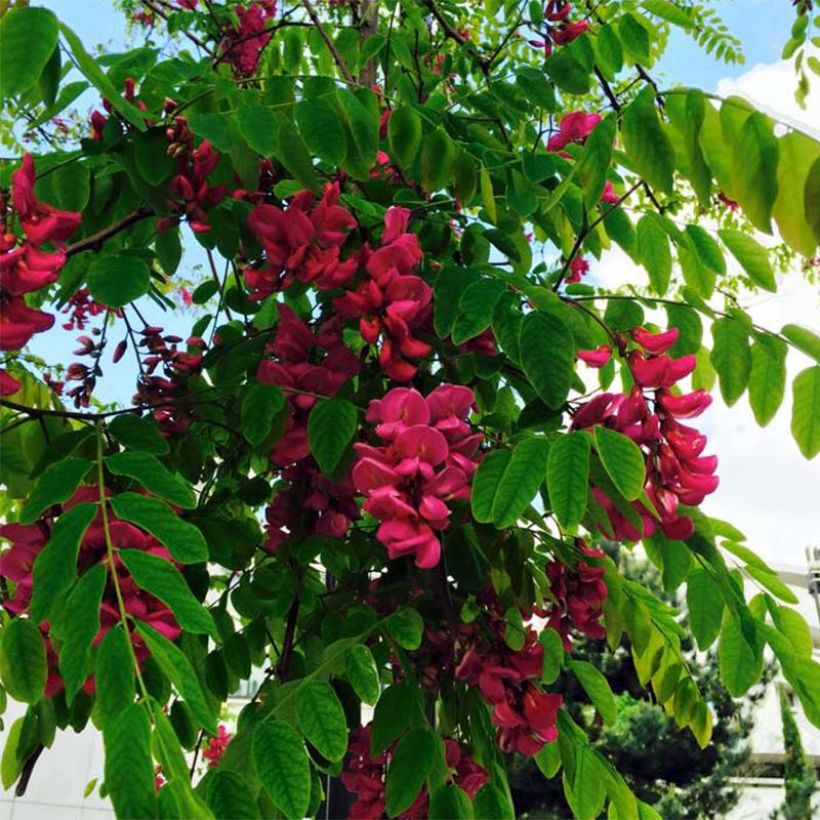

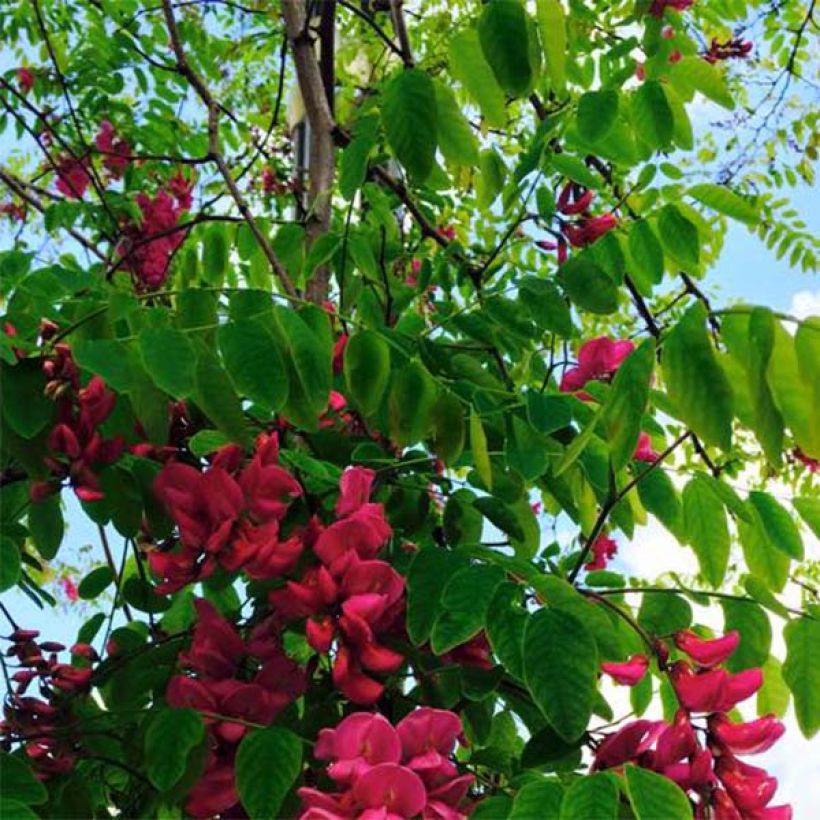

Plant habit
Flowering
Foliage
Botanical data
Robinia
pseudoacacia
Casque Rouge® 'Flemor'
Papilionaceae
False acacia, Black Locust, Locust Tree
Cultivar or hybrid
Other Robinia - Black Locust
Planting and care
'Casque Rouge' thrives in the sun, sheltered from strong winds and sea spray as its branches can be brittle and the wind can damage its flowering. The soil should be light and well-drained, even poor, preferably moist even though this variety tolerates summer drought once established. It cannot tolerate excess limestone and clay, which suffocate the roots. Its resistance to atmospheric pollution is excellent, making it valuable in urban areas. From August to October, prune dead or weak wood to prevent sap flow. Also remove branches that cross inside the canopy to maintain the proper habit of the robinia. Beware of voles who love bark and attack the base of plants.
Planting period
Intended location
Care
-
, onOrder confirmed
Reply from on Promesse de fleurs
Hedge shrubs
Haven't found what you were looking for?
Hardiness is the lowest winter temperature a plant can endure without suffering serious damage or even dying. However, hardiness is affected by location (a sheltered area, such as a patio), protection (winter cover) and soil type (hardiness is improved by well-drained soil).

Photo Sharing Terms & Conditions
In order to encourage gardeners to interact and share their experiences, Promesse de fleurs offers various media enabling content to be uploaded onto its Site - in particular via the ‘Photo sharing’ module.
The User agrees to refrain from:
- Posting any content that is illegal, prejudicial, insulting, racist, inciteful to hatred, revisionist, contrary to public decency, that infringes on privacy or on the privacy rights of third parties, in particular the publicity rights of persons and goods, intellectual property rights, or the right to privacy.
- Submitting content on behalf of a third party;
- Impersonate the identity of a third party and/or publish any personal information about a third party;
In general, the User undertakes to refrain from any unethical behaviour.
All Content (in particular text, comments, files, images, photos, videos, creative works, etc.), which may be subject to property or intellectual property rights, image or other private rights, shall remain the property of the User, subject to the limited rights granted by the terms of the licence granted by Promesse de fleurs as stated below. Users are at liberty to publish or not to publish such Content on the Site, notably via the ‘Photo Sharing’ facility, and accept that this Content shall be made public and freely accessible, notably on the Internet.
Users further acknowledge, undertake to have ,and guarantee that they hold all necessary rights and permissions to publish such material on the Site, in particular with regard to the legislation in force pertaining to any privacy, property, intellectual property, image, or contractual rights, or rights of any other nature. By publishing such Content on the Site, Users acknowledge accepting full liability as publishers of the Content within the meaning of the law, and grant Promesse de fleurs, free of charge, an inclusive, worldwide licence for the said Content for the entire duration of its publication, including all reproduction, representation, up/downloading, displaying, performing, transmission, and storage rights.
Users also grant permission for their name to be linked to the Content and accept that this link may not always be made available.
By engaging in posting material, Users consent to their Content becoming automatically accessible on the Internet, in particular on other sites and/or blogs and/or web pages of the Promesse de fleurs site, including in particular social pages and the Promesse de fleurs catalogue.
Users may secure the removal of entrusted content free of charge by issuing a simple request via our contact form.
The flowering period indicated on our website applies to countries and regions located in USDA zone 8 (France, the United Kingdom, Ireland, the Netherlands, etc.)
It will vary according to where you live:
- In zones 9 to 10 (Italy, Spain, Greece, etc.), flowering will occur about 2 to 4 weeks earlier.
- In zones 6 to 7 (Germany, Poland, Slovenia, and lower mountainous regions), flowering will be delayed by 2 to 3 weeks.
- In zone 5 (Central Europe, Scandinavia), blooming will be delayed by 3 to 5 weeks.
In temperate climates, pruning of spring-flowering shrubs (forsythia, spireas, etc.) should be done just after flowering.
Pruning of summer-flowering shrubs (Indian Lilac, Perovskia, etc.) can be done in winter or spring.
In cold regions as well as with frost-sensitive plants, avoid pruning too early when severe frosts may still occur.
The planting period indicated on our website applies to countries and regions located in USDA zone 8 (France, United Kingdom, Ireland, Netherlands).
It will vary according to where you live:
- In Mediterranean zones (Marseille, Madrid, Milan, etc.), autumn and winter are the best planting periods.
- In continental zones (Strasbourg, Munich, Vienna, etc.), delay planting by 2 to 3 weeks in spring and bring it forward by 2 to 4 weeks in autumn.
- In mountainous regions (the Alps, Pyrenees, Carpathians, etc.), it is best to plant in late spring (May-June) or late summer (August-September).
The harvesting period indicated on our website applies to countries and regions in USDA zone 8 (France, England, Ireland, the Netherlands).
In colder areas (Scandinavia, Poland, Austria...) fruit and vegetable harvests are likely to be delayed by 3-4 weeks.
In warmer areas (Italy, Spain, Greece, etc.), harvesting will probably take place earlier, depending on weather conditions.
The sowing periods indicated on our website apply to countries and regions within USDA Zone 8 (France, UK, Ireland, Netherlands).
In colder areas (Scandinavia, Poland, Austria...), delay any outdoor sowing by 3-4 weeks, or sow under glass.
In warmer climes (Italy, Spain, Greece, etc.), bring outdoor sowing forward by a few weeks.

































